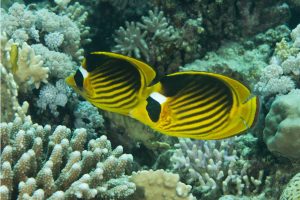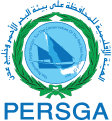In collaboration between the Regional Organization for the Conservation of the Environment of the Red Sea and Gulf of Aden PERSGA and the Egyptian Environmental Affairs Agency EEAA a two-day national workshop on review and discussion of the environmental and socioeconomic monitoring results in Wadi el Gemal Hamata National Park, Egypt has been organized during the period November 22nd – 23rd 2016. It was attended by about forty participants representing different stakeholders concerned with to the coastal and marine environment as well as representatives from the local community.
This workshop comes in fulfillment of the common objectives of the Strategic Ecosystem-based Management of the Red Sea and Gulf of Aden SEM Project and the Project Wastewater Management in Coastal Cities on the Red Sea and Gulf of Aden, which is implemented by PERSGA in collaboration with the United Nations Environment Program UNEP. Focus was on the guidelines prepared by PERSGA to monitor indicators of the impact of wastewater discharge as a potential threat on Coral Reefs.
The workshop was conducted as a part of the implementation of the environmental and socioeconomic monitoring activities in Wadi el Gemal Hamata National Park, Egypt under Component 3 of the SEM project; which is concerned with environmental and socioeconomic monitoring in the coastal areas in the region, and includes evaluation of the current status of monitoring activities in the participating countries to identify the strength weaknesses in order to assist the countries to enhance their national monitoring programs on a scientific basis; revision of monitoring methods and capacity building in personnel and equipment to support the sustainability of these national monitoring programs.
The workshop was inaugurated by Mr. Mohamed Gad el Rab, Director the Southern Red Sea Protectorates. In his opening address, he welcomed the participants, stressing the importance of collaboration between PERSGA and EEAA in implementing SEM project activities in Wadi el Gemal Hamata NP, which aims at protecting the environment and conserve natural resources for the future generations. In turn, Dr. Mohammed Badran, Director of Projects Management at PERSGA and the Regional Coordinator of the SEM Project welcomed the Participants and conveyed to them the greetings of His Excellency PERSGAs Secretary-General, he gave a brief about the project, and its components, pointing out that the implementation of the project is following ecosystem-based approach, which focuses on the involvement of stakeholders and the local community in implementing project activities.
The workshop, which lasted for two days reviewed the progress of implementation of the monitoring activities within the project and discussed the obtained results with stakeholders from various community groups in the protected area. The first day included presentations by the monitoring team reviewing the progress of the work, and discussing the results of the last stage with the local community and stakeholders. While the second day included practical training on monitoring Coral Reef using Reef Check, with the participation of a group of volunteers from the community and diving centers operating in the protected area. During the training real data of the state of coral reefs has been collected from two different sites within the protected area.
The environmental monitoring program in Wadi el Gemal Hamata National Park is executed by a team of the Red Sea Protectorates in EEAA, and includes monitoring seawater quality, various habitats (coral reefs, mangroves and sea grass), species (sea birds, turtles, dolphins and sharks).
The workshop witnessed broad participation from the local community of Wadi el Gemal Hamata National Park, and provided an effective platform for the exchange of views and experiences among participants. Challenges faced by monitoring programs in the region and the need to develop them has been discussed. The workshop also showed the importance of community involvement in various monitoring activities, which was warmly welcomed by the participants from the local community who indicated that they have learned a lot in this workshop and recommended organizing similar activities repeatedly to expand the benefit of environmental monitoring programs to the largest possible number of stakeholders and ensure sustainability of such programs.
More to find

National Workshop on Environmental Monitoring and Communicating with Stakeholders Applying …

Consultation Mission in Dungunab and Mukkawar Island National Park Meeting …

Follow up of Monitoring Activities and Procurement of Monitoring Equipment



